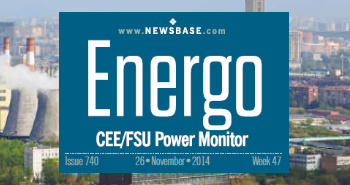IAEA chief Rafael Grossi arrives at the occupied Zaporizhzhia power plant

Officials from the International Atomic Energy Agency (IAEA) arrived at the Zaporizhzhia nuclear power plant (ZNPP) on September 1, despite shelling that shut down operating unit 5 and attacks on the nearby city of Enerhodar.
The strikes came as 14 experts from the IAEA announced a visit to the Russian-occupied NPP amidst concerns over a nuclear disaster and abuse of the Ukrainian workers, Ukrainian Pravda reported on September 1. Repeated shelling at the plant has caused fear that an accident is waiting to happen, with both Kyiv and Moscow accusing each other of the attacks.
“On the eve of the visit of the IAEA mission, the Rushists [Russian soldiers] resorted to new provocations at the ZNPP. On 1 September, at 04:57, as a result of another mortar shelling by the Russian occupying forces at the site of the ZNPP, the emergency protection system was activated and operating power unit 5 was shut down," Ukraine’s state-run nuclear operator Energoatom announced.
The IAEA experts made it through Russian-controlled territory, despite being initially denied special passes from Moscow’s forces, and arrived at the ZNPP accompanied by a Russian convoy. After months of requests, the experts finally inspected the plant.
“We were able, in these few hours, to gather a lot of information. The key things I needed to see, I saw,” IAEA chief Rafael Grossi said. He confirmed that representatives from the IAEA will remain at the plant until September 3 with a permanent presence planned in the near future, BBC Russia reported.
Ukrainian President Volodymyr Zelenskiy called on Russia last month to “immediately and unconditionally allow representatives of the IAEA to the station” and “unconditionally withdraw its troops from the territory of the station”, during a meeting with UN Secretary-General Antonio Guterres and Turkish President Recep Tayyip Erdogan on August 18 in Lviv.
Moscow responded by saying that the proposal to demilitarise the area around the ZNPP was “unacceptable”, Reuters reported. Moreover, Russian defence ministry spokesman Igor Konashenkov denied that heavy weapons were in proximity to the plant and insisted that Moscow was ensuring the safety of the site. However, Russian military trucks were secretly filmed in the plant last week and were spotted again in footage from the IAEA inspection. It is not known what is inside the vehicles.
The plant is the largest in Europe and accounts for one-fifth of Ukraine's annual electricity production. Last month, Russia announced that it wants to switch the ZNPP to the Russian grid under the control of Rosatom in order to transfer power to occupied Crimea, which would result in blackouts across southern Ukraine and mean that Kyiv would have to recapture the plant in order to reconnect it to its grid. Although disconnecting from Ukraine’s grid would be extremely difficult, it is not impossible.
Despite the war, Ukraine has managed to keep eight out of 15 nuclear energy reactors online. The seven other reactors are shut down for regular maintenance or held in reserve. Safety systems remain operational at the four NPPs, and they also continue to have off-site power available, Ukraine said.


Follow us online